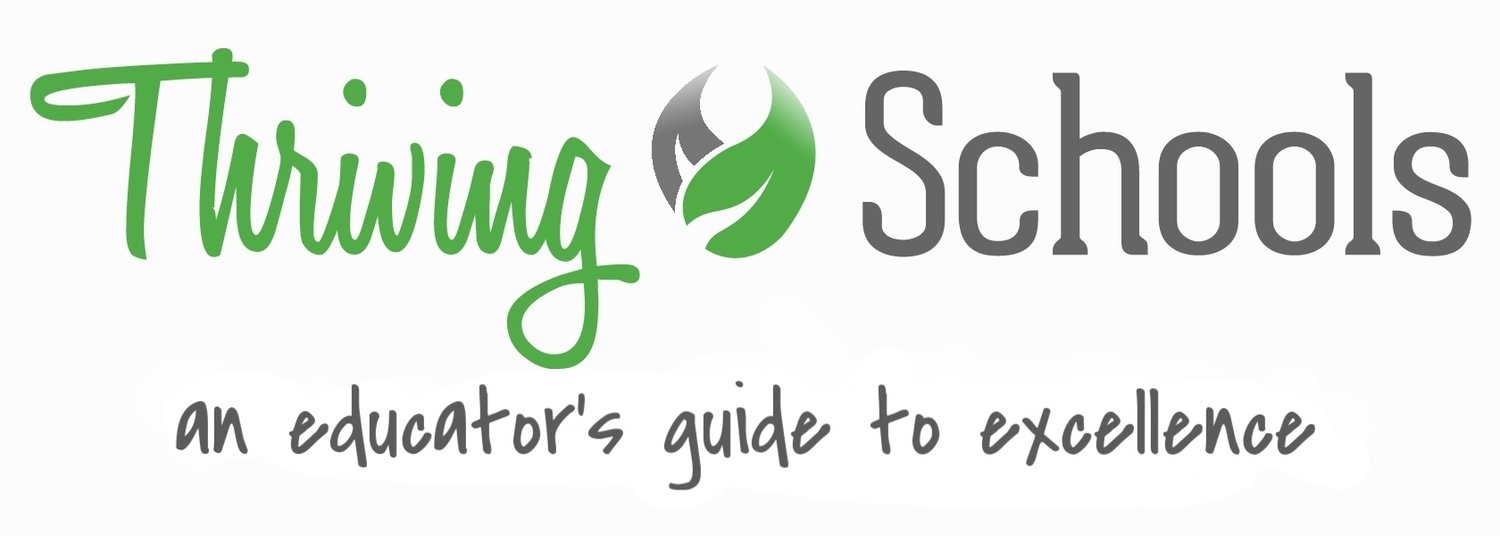Does Your PD Do This?
/As we start the current school year, we thought it’d be fun to review the Gates Foundation Report on Professional Development. In Teachers Know Best, published in 2015, the Boston Consulting Group surveyed more than 1,300 teachers to determine what works (and what doesn’t) when it comes to the development of educators. In this piece, we present the report’s 3 most surprising findings and what teachers say the best PD programming accomplishes!
Brief Summary of Findings
According to the report, we spend $18 billion each year on professional development and a typical teacher spends 68 hours on the professional learning activities offered by their districts (when you include self-guided learning and coursework, this number is closer to 90 hours). Despite this, only 29% of teachers are highly satisfied with current professional development offerings, large majorities of teachers do not believe that PD is helping them prepare for the changing nature of their jobs (including learning about digital tools, analyzing student data for differentiation, and implementing Common Core), and principals largely share their teachers’ concerns about PD efficacy.
Back in April, we reviewed TNTP’s report The Mirage, which came to very similar conclusions. They found that schools spend just under 10% of their operating budgets on PD, that the investment doesn’t translate into any improvement for the vast majority of teachers, and that when teachers do get better it’s impossible to determine what strategy led to the improvement.
Given this backdrop, let’s dig into the 3 most surprising findings from the report . . .
SURPRISE #1 – Despite their wide-spread use, teachers are very dissatisfied with PLC’s
According to the report, nearly 70% of all teachers participate in professional learning communities. In fact, the use of whole group “workshops” was the only PD activity that had a higher participation rate (about 80%). Despite their wide-spread use, however, teachers remain very dissatisfied with their outcomes.
Figure 1:
As you can see above, professional learning communities had a net satisfaction score of -45. Shockingly, those in charge of providing PD believe that teachers should spend significantly more time in such PLCs (74% more time, to be exact).
The good news in this is that teachers demand (and are very satisfied with) collaboration that actually works. In order to have effective PLCs, collaboration needs to be focused on planning specific lessons, writing standards-aligned curriculum, and sharing teachers’ experiences around what’s working and what isn’t. The report goes on to state that schools that have strong collaboration scores, have much higher day-to-day teacher-satisfaction ratings. Figure 2 shows teachers’ representative views on collaboration.
Figure 2:
Surprise #2 – Teachers want coaching that focuses on development, not evaluation
Given the findings in Figure 1 above (coaching has a net satisfaction score of -6), one might conclude that teachers are skeptical of being developed in this way. However, that’s far the correct conclusion. Why? First of all, coaching is actually quite rare. Principals report that 60% of their coaching time is directed toward new and struggling teachers. In addition, nearly 70% of teachers either receive no coaching at all or coaching that takes place just a few times a year. As the report states, “the advent of new teacher evaluation systems means that teachers are getting observed more . . . but observations rarely lead to true coaching about what they could do differently.”
Here again, the good news in all of this is that teachers actually have a very good sense for what effective coaching looks like. Teachers want coaches that have content expertise in their given subjects, that can provide specific suggestions for immediate implementation, and that aren’t there simply to conduct an evaluation. In other words, teachers want development that is “relevant, hands-on, and sustained.”
Check out our interviews with Paul Dean on how to develop strong instructional coaches and with Mike McKenna on how to provide continuous coaching to your school team.
Figure 3:
Surprise #3 – Traditional PD has become more of an exercise in compliance than learning
Despite the fact that teachers enter the profession because they love to learn, traditional PD has become much more about compliance than actual growth. The report argues a big reason for this is that teachers are given very little say in their development (less than 30% choose most or all of their professional learning opportunities). It goes on to state that when teachers are given a choice, their satisfaction with PD increases dramatically.
The report provides another simple solution on this front – a shift in tone. That’s right! By simply shifting the focus of PD away from the rules teachers are to follow (and instead focus on how they can improve student outcomes), schools can dramatically improve effectiveness and perception.
Figure 4:
Conclusion – What Teachers Really Want!
Teachers’ conclusions about effective PD are pretty spot-in! They say it should be “relevant, hands-on, and sustained over time.” As part of this, they say learning experiences should be less about presentations and more about “opportunities to apply their learning through modeling and practice.”
The report also goes on to share a number of promising innovations in the world of professional development, including content aggregation platforms, collaboration tools, and web-based evaluation systems. In fact, back in June, we presented a conversation with Jason Lange, Co-Founder and President of Bloomboard, on how his company is leading the charge in bringing these types of innovations to districts and schools.
Figure 5:






